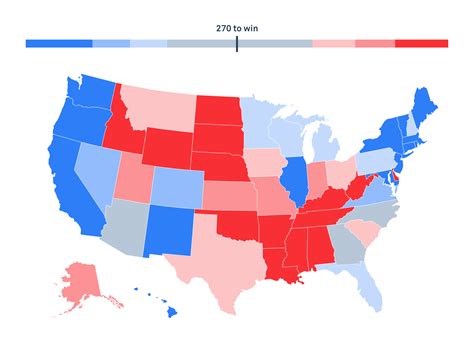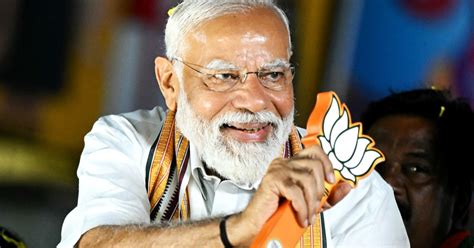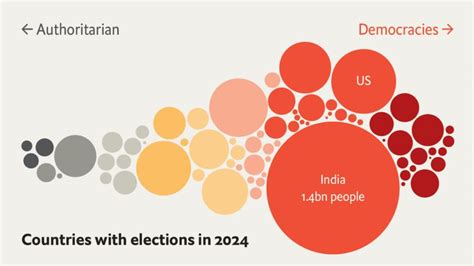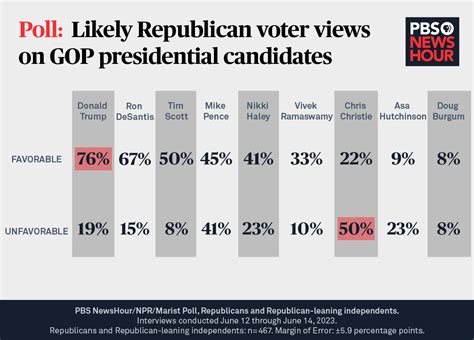Explore key states in elections, analyze voter demographics, and strategize campaigns to predict outcomes in this insightful blog post.In the dynamic landscape of American politics, the significance of key states in shaping election outcomes cannot be overstated. Exploring The Electoral Map: Key States To Watch delves into the pivotal battlegrounds that often determine the course of national elections. As we analyze voter demographics, recent shifts in electoral behavior, and strategic campaign approaches, this article aims to provide a comprehensive understanding of why certain states become focal points for candidates. By examining these critical areas and predicting their potential outcomes, we equip voters and political enthusiasts alike with insights necessary to navigate the complexities of future elections. Get ready to explore the electoral map and uncover the trends that could influence the next chapter in the American political narrative.
Understanding The Importance Of Key States In Elections
Key states, often referred to as battleground states, play a crucial role in the outcome of elections in the United States. They are characterized by their unpredictable political affiliations and can swing either way, making them essential for both major parties. Understanding the significance of these states can provide insights into electoral strategies and voter engagement efforts.
One of the primary reasons Exploring The importance of key states is vital lies in their electoral votes. The U.S. uses an Electoral College system, where each state has a designated number of electoral votes based on its population. Key states, such as Florida, Ohio, and Pennsylvania, often have a substantial number of votes that can tilt the election outcome. With a tight race often seen in presidential elections, winning these states can directly determine who occupies the White House.
Moreover, the demographics of key states reflect a diverse array of voters, including different ethnic, socioeconomic, and age groups. This diversity can influence campaign strategies, as parties must tailor their messages to resonate with various segments of the population. By focusing on key states, campaigns can identify specific issues that are of significant concern to the electorate, such as healthcare, education, and employment.
As elections approach, both parties invest heavily in these crucial areas, allocating resources such as funding, advertising, and grassroots mobilization efforts. The competition in these states often results in a heightened political engagement among voters, increasing turnout and participation rates.
The importance of key states in elections cannot be overstated. They serve as battlegrounds for party platforms, strategies, and voter activation. Exploring The dynamics of these critical regions offers a deeper understanding of the electoral process and the factors that influence voter behavior.
Analyzing Voter Demographics In Key Battleground States
Understanding the voter demographics in key battleground states is crucial for candidates looking to secure electoral victories. These states often serve as microcosms of the national electorate, showcasing varying political preferences driven by factors such as ethnicity, age, education, and income levels. Analyzing these demographics can provide insight into the potential success of campaign strategies and candidate appeal.
Below is a table that highlights key demographic factors influencing voter behavior in several critical battleground states:
| State | Population | Major Ethnic Groups | Median Age | Education Level |
|---|---|---|---|---|
| Florida | 21.78 million | White, Hispanic, Black | 42.4 years | 88% high school or higher |
| Pennsylvania | 13.01 million | White, Black, Hispanic | 40.8 years | 89% high school or higher |
| Wisconsin | 5.89 million | White, Black, Hispanic | 39.4 years | 90% high school or higher |
| Michigan | 10.10 million | White, Black, Hispanic | 39.8 years | 90% high school or higher |
The demographics of these key states indicate the diverse and shifting voter base that candidates will need to address. For instance, in Florida, the increasing Hispanic population plays a significant role in shaping electoral outcomes. Similarly, in states like Wisconsin and Michigan, there’s a notable presence of young voters and college-educated individuals, who may lean towards progressive platforms.
The analysis of voter demographics in these battleground states is essential for crafting effective campaign messages. By exploring the unique characteristics of each demographic group, candidates can tailor their outreach efforts and maximize their chances of success in the upcoming elections.
Exploring The Electoral Map’s Shifts Over Recent Elections
In recent years, exploring the electoral map has revealed significant shifts in voter preferences and party dynamics across various states. These changes don’t just reflect demographic alterations; they also showcase evolving political landscapes influenced by social, economic, and cultural factors.
One of the most notable shifts has been in traditionally red states turning purple or blue, showcasing a growing liberal sentiment in areas that were once Republican strongholds. For instance, states like Georgia and Arizona have seen an influx of new voters, often younger and more diverse, impacting the outcomes of elections. This trend emphasizes the importance of understanding voter motivations and the role of grassroots movements in effecting change.
Moreover, key states such as Wisconsin, Michigan, and Pennsylvania have demonstrated the volatility that often defines battleground territories. In these regions, subtleties such as rural versus urban voting patterns have created a more nuanced electoral battle, with candidates needing to tread carefully to appeal to both demographic segments.
Political strategy has also evolved as campaigns increasingly focus on micro-targeting and leveraging data analytics to predict voter behavior. This approach is pivotal in exploring the intricacies of state-specific issues that may sway constituents, such as healthcare, education, or local economic concerns.
As we prepare for upcoming elections, the shifts observed in the electoral map will undoubtedly inform campaign strategies and voter outreach efforts. Understanding these trends is essential for political analysts, campaigners, and voters alike, as they navigate the complexities of an ever-changing political arena.
Strategizing Campaigns Based On Key States And Trends
In the ever-evolving landscape of electoral politics, effective campaign strategies hinge on a thorough understanding of key states and emerging trends. Exploring The nuances of each state’s political climate is essential for campaign managers and candidates alike to allocate resources efficiently and maximize their impact.
One of the first steps in this strategic planning involves analyzing historical voting patterns. Campaign teams should delve into past election results to identify which demographics supported specific candidates and what issues resonated in different regions. This analysis can guide campaign messaging and outreach efforts, ensuring they are tailored to the unique needs and preferences of the electorate.
Additionally, the utilization of data analytics has become increasingly important. By leveraging advanced tools and metrics, campaigns can gain real-time insights into voter sentiment and track changes in public opinion as the election approaches. This data-driven approach allows for agile campaign adjustments that can capitalize on shifting voter priorities.
Engagement in ground-level outreach is another critical strategy. Campaigns should prioritize direct interaction with voters through town halls, community events, and door-to-door canvassing. This personal touch not only builds rapport but also provides an opportunity to gather valuable feedback on voter concerns and expectations.
Understanding the significance of local media and digital platforms for disseminating campaign messages cannot be overstated. Engaging with key state influencers and leveraging social media can amplify a candidate’s presence, especially in battleground states where every vote counts. Tailoring content to resonate with local issues while using the focus keyword effectively can enhance visibility and reach. In summary, a well-rounded strategy that combines data analysis, targeted communication, and grassroots engagement is essential for navigating the complexities of key states in any election cycle.
Predicting Outcomes: What To Expect From Key States
As the electoral landscape continues to evolve, predicting outcomes in key states becomes essential for understanding the overall direction of elections. Each election cycle, several states emerge as pivotal battlegrounds due to their unique demographics, political leanings, and historical voting patterns. By analyzing these factors, we can gain insights into what to expect from these crucial regions.
One primary element to consider is the voter turnout in each key state. High levels of engagement among certain demographic groups can sway results significantly. For instance, states like Georgia and Arizona witnessed unprecedented voter turnout in recent elections, which played a crucial role in determining their outcomes. Monitoring grassroots campaigns and voter mobilization efforts will provide valuable clues about potential shifts in the electorate.
Moreover, the issues that resonate with voters in these key states cannot be underestimated. Topics such as the economy, healthcare, and social justice remain at the forefront of political discourse. Understanding which candidates or parties successfully address these concerns can greatly impact their chances of success.
Another factor to watch is the role of independent voters. These voters can be unpredictable and often determine the effectiveness of campaign messaging. With their numbers growing in several states, analyzing their preferences and key issues will be vital for predicting electoral outcomes.
Polling data also plays an important role in shaping expectations. While it is not always an accurate predictor, keeping track of trends and shifts in public sentiment can offer glimpses into how key states might lean as Election Day approaches.
Predicting outcomes in the key states involves a multi-faceted approach that takes into account voter demographics, turnout, pressing issues, and public sentiment. As we continue to explore the electoral map, staying informed about these variables will be essential for understanding how they might influence the electoral process.
Frequently Asked Questions
What is the significance of the electoral map in a presidential election?
The electoral map outlines the distribution of electoral votes among states, highlighting which states are crucial for candidates to win in order to secure the presidency.
Which states are traditionally considered swing states?
Swing states, or battleground states, can vary by election cycle, but often include states like Florida, Pennsylvania, and Wisconsin, where voter preferences are less predictable.
How do demographics affect voting trends in key states?
Demographics such as age, race, and education levels can significantly influence voting trends, as different groups may have varying priorities and perspectives on issues.
What role does voter turnout play in key states?
Voter turnout is crucial in key states, as higher participation rates from specific demographics can sway election outcomes, especially in closely contested regions.
How do local issues impact elections in key states?
Local issues, such as economic conditions, public health, and education policies, can significantly influence voter priorities and decisions in key states.
What strategies do candidates use to campaign in critical states?
Candidates often tailor their messages and outreach efforts to resonate with the unique needs and concerns of voters in critical states, including rallies, advertisements, and grassroots organizing.
How can early voting and mail-in ballots affect the electoral map?
Early voting and mail-in ballots can increase voter participation by making it easier for people to cast their votes, thereby impacting the electoral map and possibly the outcome of key states.









